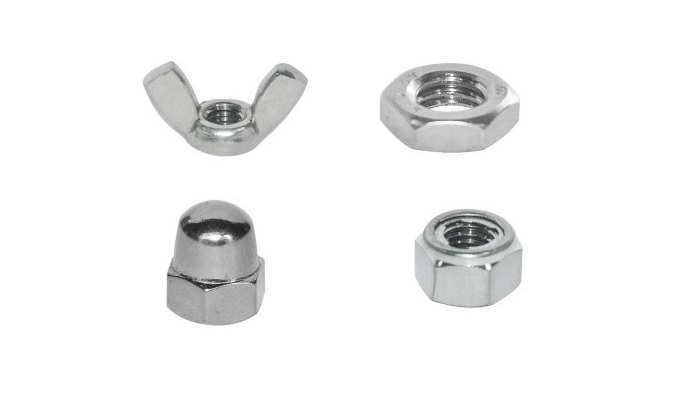Micrometer, also known as micrometer screw, is a precision measuring tool and is widely used in precision machining inspection. However, the measured value is not an absolute value. Only when it is used correctly can the measuring tool be used to its full potential and infinitely close to the true value.
However, after using the micrometer for so long, have you really used it correctly? Today, let's learn the correct use of the micrometer.
The first step to correctly use the micrometer is to choose a suitable micrometer.
Selection of Micrometer
Micrometers are divided into digital display type, mechanical type (non-digital display), waterproof and oil-proof type, general type, special type, large type, fast measurement type, ultra-high precision type, etc. Before use, you need to carefully confirm the type, measurement range, accuracy or other specifications of the micrometer.

Standard outside diameter micrometer

Digital outside diameter micrometer



Special micrometer (some examples)
Correct Reading of Scale
When using a mechanical micrometer (non-digital display), there are often misunderstandings in the reading, which affects the accurate measurement value. Mastering the correct way to read the scale is crucial to improve the accuracy of reading.
01. Correct reading of scale
When reading the scale of the differential cylinder, the correct line of sight is: look directly at the reference line from the front. As shown in example b below:

Look directly at the reference line from the front

If the line of sight is read at an angle like (a) from top to bottom or (c) from bottom to top (below), it will be affected by visual deviation and unable to read the correct position of the scale, resulting in reading errors.

02. Reading the scale of the standard micrometer

Standard micrometer
The scale reading method for the standard scale (division value 0.01mm) is as follows:

Under normal circumstances, the division value can be read to 0.01mm as shown in the above figure, or the division value can be read to 0.001mm as shown in the figure below.

03. Reading the scale of a micrometer with a vernier scale
The micrometer with a vernier scale has a vernier scale on the top of the casing baseline. The scale reading method is shown in the figure below:

② When the guide line is between two scales (in this case, 21 and 22), read 0.21mm.
③ When the vernier scale is aligned with one of the differential cylinder scales, read 0.003m.
04. Reading the scale of a counter type micrometer

Micrometer with a counter
The scale reading method with a counter (division value 0.001mm) is as follows:

Note: ②0.004mm is the reading when the vernier scale line corresponds to one differential scale line.
The Influence of Temperature
Before starting the measurement, in order to avoid the influence of temperature, the micrometer and the workpiece to be measured should be placed at room temperature for a long enough time to balance their temperature.

In addition, in the process of using the micrometer, the influence of hand temperature on the micrometer is often overlooked.
When holding a micrometer for measurement, the heat of the hand will be transferred to the measuring tool when holding the micrometer frame, resulting in obvious measurement errors (as shown in the experimental results below).

(Please note that the above figure shows a typical impact result, not limited to such results)
As shown in the above figure, the thermal expansion value of the micrometer increases with the increase in holding time. Therefore,
① If you must hold the micrometer during measurement, try to minimize the contact time.
② To reduce the above temperature effects, you can also choose to install a thermal insulator or wear gloves.
③ You can choose a dedicated micrometer stand.
Impact of the Support Stand
The choice of the support point of the stand will also have different effects on the measurement results.
When using the stand, the choice of the fulcrum position and the posture of the micrometer will have different degrees of influence on the measurement results. As shown in the following figure.


Therefore, after determining the measurement posture, it is necessary to align the base point before use.
Daily Maintenance
01 Adjust the starting point (zero adjustment) before measurement, and use lint-free paper to wipe the measuring surface of the anvil and micrometer screw.

02 As part of routine maintenance, wipe away dust, crumbs and other debris from the surroundings and measuring surfaces. In addition, use a dry cloth to carefully wipe away stains and fingerprints.
03 Use the force measuring device correctly so that measurements are taken at the correct force.

04 When attaching the micrometer to the micrometer stand, the stand should be clamped firmly in the center of the micrometer frame, but be careful not to clamp too tightly.

05 Be careful not to drop the micrometer or collide with anything. Do not turn the micrometer screw with excessive force. If you feel that the micrometer may have been damaged due to accidental misoperation, you need to further check its accuracy before use.
06 After long storage or with a protective oil film, gently wipe the micrometer with a cloth soaked in anti-corrosion oil.
07 Improper storage methods will also shorten the life of the measuring tool. Recommendations:
△Avoid direct sunlight when storing, store in a well-ventilated, low-humidity, and dust-free place.
△After use, please store the micrometer in an occupied storage box. Please store the storage box properly and do not place it directly on the ground.
△During storage, there should be a gap of 0.1mm to 1mm between the measuring surfaces for storage. At the same time, do not lock the fastening device and do not store it in a clamped state.
Reference: Mitutoyo Company





